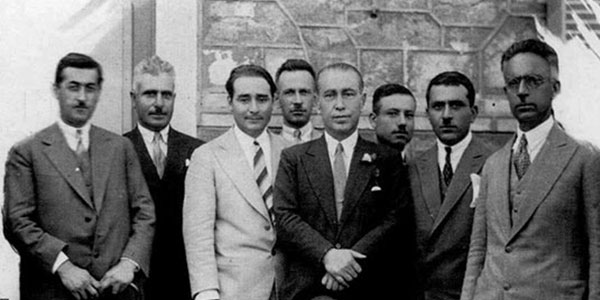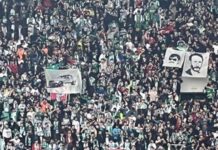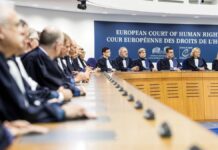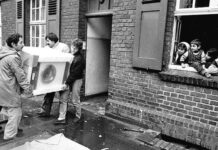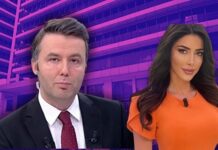After noting that Steven Cook’s recent Foreign Policy article (1) was presenting an outdated version of Mustafa Kemal, his politics, and his ideology, I moved on to the other main issue in his column, that is to say the Kurdish question. I explained that the conflict was both historically more extensive than Cook had suggested, and that the agents responsible for the conflict on the Turkish side cannot be equated with the Turkish people as a whole, but rather with a particular group of ideologically-motivated political actors — frequently referred to as the military-bureaucratic establishment of hard Ataturkist persuasion — that maintained hegemony or at least tutelage over Turkish state institutions from the 1920s until about a decade ago (2).
Consequently, Cook’s definition of the conflict between the Turkish state and the PKK as “a struggle between two nationalisms, and the identities linked to them” is no longer accurate in any sense. Even in the immediate pre-AKP era, the powers in control of the Turkish state were those same forces that can be traced back to the radical CUP-Kemalist ideologies which founded and molded the Turkish Republic in the 1920s and 1930s. Turkish society in the broad sense was not involved in the conflict with Kurdish political and military actors other than to provide cannon fodder for the firefights. Until 1938, the conflict was played out – largely for political hegemony — only between Kemalist state elites and local Kurdish leaderships. Since the PKK’s foundation, the conflict has raged between the same Kemalist state elites and an ideological movement only partially focused on or motivated by Kurdish nationalism.
Indeed, if Kurdish nationalism were the only (or main) motivating factor, then why would non-Kurds be attracted to the fight? The answer is clear and significant, crying to be taken into account. It is the PKK’s Marxist-Leninist-Maoist ideology (and not its Kurdish nationalism) that attracts the surviving and most hard-bittenly violent fringe elements of the former Turkish Left, and provides not just a theoretical corroboration for their beliefs but also a much more essentialistic justification for their very existence. In brief, they see the PKK as achieving or having achieved what they failed to do, i.e. violent revolution; this takes them into hanging on to the PKK’s coattails by way of extracting revenge by proxy on the Turkish state. This is also why the PKK sees little support amongst Turkish Kurds who are either religious or who have established themselves within Turkey’s professional classes. The majority of the PKK’s militants in the west are from the under-classes in Kurdish-majority urban centers or neighborhoods such as İstanbul’s Gazi Mahallesi (District); to the east they are mostly villagers. The PKK’s and HDP’s leadership also has a smattering of classical revolutionary types who have reached middle class status through education, such as Abdullah Öcalan himself (one-time civil servant, student of law and political science) or the lawyer Selahattin Demirtaş (3). The PKK itself officially abandoned the goal of founding a Kurdish state more than a decade ago (4). Most recently Cemil Bayık, one of the PKK’s founders and highest-ranking leaders, even told the press that now the PKK’s main goal was overthrow Turkey’s AKP government (5). All this reflects something beyond an initial impetus provided by Turkish nationalism. It is much more of a hodge podge, a violent and volatile hodge podge, hence also an increasingly footloose and unpredictable hodge podge, than Steven Cook realizes.
In his article, Cook claims that the AKP has tried to emphasize a religious bond, a common “Muslimness” (as Cook calls it) between the Turkish and Kurdish segments of Turkey. Once more, Cook’s explanation is strangely insufficient because a prominent theme of recent Turkish political debate has precisely been the manner in which Turkish society is likely to be re-conceived in opposition to all earlier Kemalist-related formulas. Last September, President Erdoğan coined a term at a political rally that instantly became a catchphrase in Turkish politics: yerli ve milli (6). In English, that is “domestic and national,” a phrase purposefully vague enough to encapsulate all of Turkey’s minority ethnicities and religious sects. In other words, neither strict Turkish nationalism nor a strict Islamic identity is on the table. A broader, more inclusive Turkish identity is also under construction, which is much closer to the older term Türkiyeli (“of/from/belonging toTurkey”). This is the approach that has made it possible for the AKP’s PM to take on an Armenian intellectual as advisor, and for another Armenian intellectual to be elected as an AKP MP (7).
As the AKP slowly asserted control over the Turkish state security forces and, subsequently, other Turkish state institutions, Turkey’s political atmosphere began to change. With the removal of the military from Turkish politics, Turkey became a freer, more democratic society. The AKP’s step-by-step institution of political reforms, including those keyed to Turkey’s Kurdish population, opened the road to a peaceful, democratic resolution for Turkey’s Kurdish people. Correspondingly, Turkish society has witnessed, in the past ten years, an entirely new outbreak of interest in and dialogue about Turkey’s Kurdish reality. Both in terms of politics and state institutions, the situation has changed fundamentally. No longer can any sort of political violence find justification when the channels for democratic struggle are now free of the obstructions — legal, institutional, and ideological — that used to hinder Turkish society in developing a just and comprehensive approach to its Kurdish citizens.
And finally, where does this leave us in terms of Atatürk’s legacy? In the coming ten to twenty years, we shall finally see the long-delayed deconstruction of his personality cult. We are going to see, at long last, an open, honest evaluation of the 1926 Independence Tribunals, with which Mustafa Kemal eliminated — physically in many cases — his actual or potential political opposition. We will see some attempts to quantify the human cost of the radical, sometimes violent, social reforms of the 1920s and 1930s. How many are aware that some dozens of Turkish citizens were executed for refusing to wear hats after Mustafa Kemal’s Şapka Kanunu (Hat Law) was enacted? How many foreigners (or even secular Kemalist elites) truly understand the cultural trauma and vacuum created by Mustafa Kemal’s mandate to almost instantaneously change the alphabet used for Turkish from Arabic to Latin letters? Or by the efforts to “Turkify” the Turkish language in the 1930s? We will be able to talk openly about the oppressive, sometimes violent, early measures taken against Turkey’s minorities, which established prejudicial attitudes and practices that would continue for the rest of the 20th century. And we will be able to discuss more openly the ludicrous ideological inventions — such as the Turkish Thesis of History or the Sun Theory of Language — of the 1930s, all meant to enforce the establishment of a monolithic nation-state despite the overwhelming ethno-linguistic diversity that existed in Turkish society (8).
The main manner in which Atatürk was, as Cook puts it, “stunningly successful” was in maintaining oppressive control over a country while instituting radical social reform projects that the vast majority of the citizens inwardly opposed. The short-lived Progressive Republican Party of 1925 owed its meteoric rise (as well as its abrupt termination) to the massive popular displeasure with Mustafa Kemal’s reforms. So did the Free Republican Party of 1930, which while initially approved by Mustafa Kemal himself as an attempt at creating “his majesty’s loyal opposition,” was tolerated for only three months. No other political parties were allowed for another sixteen years. In other words, the “never hegemonic” phrase Cook prefers to use in reference to the unpopularity of Atatürk’s reforms is a severe understatement. Only later, in the 1950s and 1960s, was a more solid foundation laid for Atatürk’s historical myth. And after the 1980 coup, the Turkish military used the Turkish education system to sledgehammer an oppressive ideology — the “Turkish-Islamic synthesis” that maintained a strict vision of Atatürk as the national father — into the minds of several generations of Turkish citizens. The psychological effects still linger, distorting much of domestic Turkish political dialogue.
Western commentators, for their part, have written almost exclusively glowing accounts of Mustafa Kemal’s reforms and legacy, focused on his role in helping Turkey “become modern.” The bad parts were glossed over, and the fact that the Turkish people had no say in those reforms was either not understood or ignored. But Western journalists, pundits, and academics no longer have any excuses for perpetuating this distorted narrative.
Many of the bricks that Cook uses to construct his article’s argument are solid facts of Turkish history, but the overall structure that they have been used to create is now collapsing. Some of those bricks can be reused, but only when Atatürk is finally taken down from his historical pedestal and analyzed through clear, informed, and objective eyes will the Republic of Turkey build a more accurate — and healthier — historical narrative for itself.
NOTES
(1) http://foreignpolicy.com/2016/03/28/how-happy-is-the-one-who-says-i-am-a-turk/?utm_source=Sailthru&utm_medium=email&utm_campaign=New%20Campaign&utm_term=*Editors%20Picks
(2) https://serbestiyet.com/yazarlar/adam-mcconnel/deconstructing-ataturks-personality-cult-a-response-to-steven-cook-1-677847; https://serbestiyet.com/yazarlar/adam-mcconnel/deconstructing-ataturks-personality-cult-a-response-to-steven-cook-2-679616
(3) Yıldıray Oğur has recently explained in detail the connections between one of Turkey’s most prestigious universities and pro-PKK activities: https://www.serbestiyet.com/yazarlar/yildiray-ogur/bogazicinde-yasayan-simonlar-673370; https://www.serbestiyet.com/yazarlar/yildiray-ogur/bogazicinde-yasayan-simonlar–2–673640
(4) https://serbestiyet.com/yazarlar/vahap-coskun/silah-ve-siyaset-3-170137; http://www.ataa.org/reference/pkk/pkk.html; http://www.turkishweekly.net/2007/05/27/article/chronology-of-the-important-events-in-the-world-pkk-chronology-1976-2006/
(5) https://www.serbestiyet.com/yazarlar/abdullah–kiran/kurdun-derdi-ak-parti-iktidari-mi-679372; http://www.thetimes.co.uk/tto/news/world/article4712984.ece
(6) http://www.bbc.com/turkce/haberler/2015/09/150920_istanbul_miting; http://www.ntv.com.tr/turkiye/cumhurbaskani-erdogandan-yerli-ve-milli-aciklamasi,YC3lxVcUAUGDeo6A7ve_LA
(7) http://www.dailysabah.com/columns/etyen-mahcupyan/2014/11/12/prime-ministers-armenian-advisor; http://www.hurriyetdailynews.com/minority-mps-preserve-seats-in-nov-1-election.aspx?pageID=238&nID=90641&NewsCatID=339
(8) Of course, the ethno-religious diversity that existed in Ottoman society had been massively reduced by the loss of most of the Empire’s Balkan provinces in the 19th and early-20th centuries. Added to that were the influxes of Muslim refugees after the Circassian exile (1864), the Russo-Ottoman War of 1877-1878, and the Balkan Wars (1912-1913). The Greek-Turkish population exchange after WWI further reduced religious diversity in what would become the Turkish Republic. However, it should be noted that a surprising amount of diversity within Islam exists even today in Turkish society.


